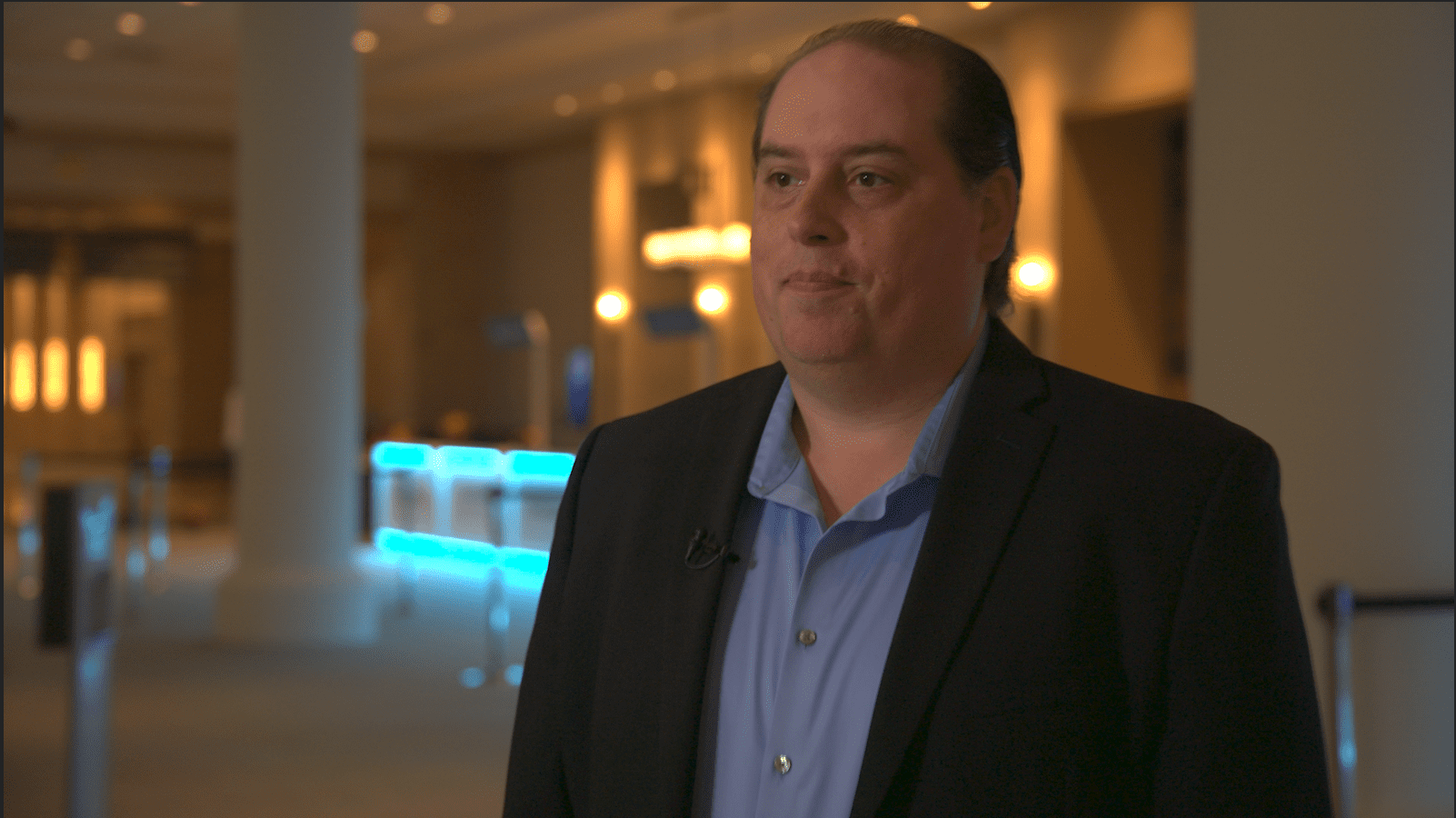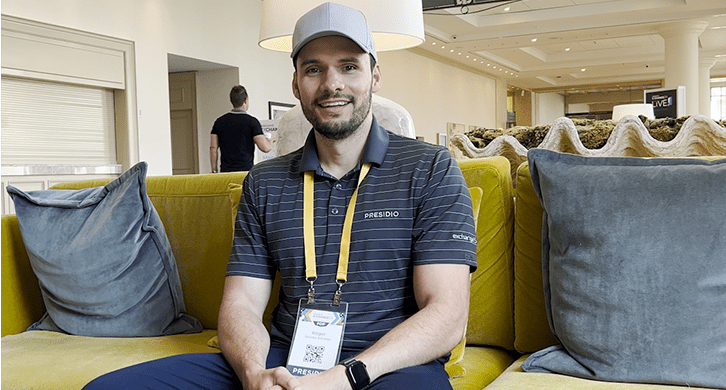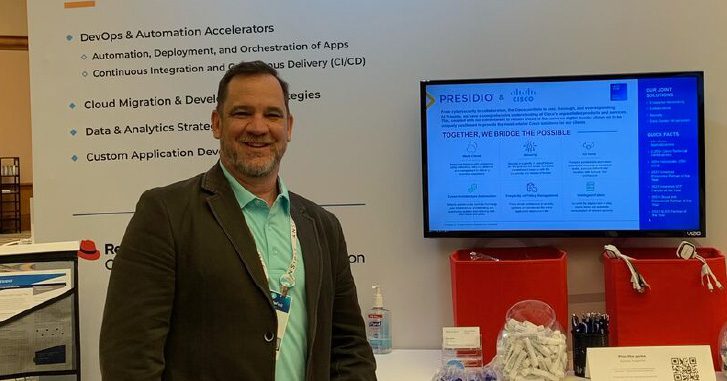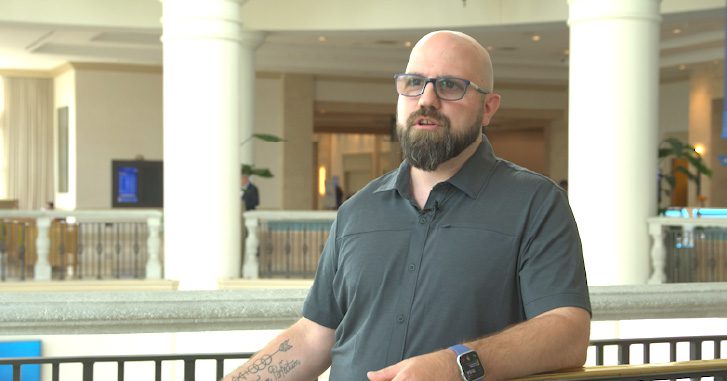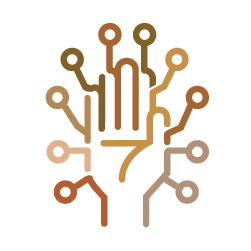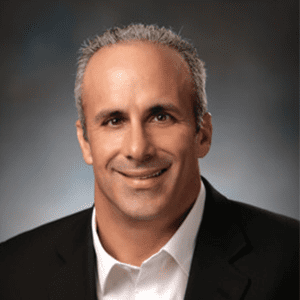

By utilizing telemetry, AI, and centralized management, organizations can stop problems and remove roadblocks before they impact business operations. This means that end users will never feel the effects of a dilemma, but only learn about it after a solution has been put into place.
This is the goal of the next-generation of networking. These innovations can keep networks standing strong in the event of a failure — meaning business operations never feel the effects of an outage.
Our guests today, all integral assets with Presidio, discuss the improvements that next-gen networking brings to the table. Steve DiCicco, Practice Director – Enterprise Networking [Pro Services], Andy Richter, Enterprise Networking Practice Director, and Britny Bolton, Inside Solutions Architect cover emerging tech and the tangible impacts it can bring.
Next-generation networks, AI, and the future of network problem solving
“One of the worst feelings is calling a helpdesk with an issue and the first question they ask is for you to turn your device off and back on again. We have to find a way to eliminate those rudimentary questions and save the time we are wasting,” Britny says.
These basic questions waste resources and often only serve to frustrate the end user. Here, automated correlation of assurance data can step in to save the day and further enable operators to work efficiently by the way of chatbots.
By offloading these tasks to automation, more senior staff can be reserved for only complex queries. As AI advances and more use cases are made available, more can be offloaded and automated — saving time, and energy, and easing frustration for all players in each stage of the process.
The keys to success: intent and centralized control
The shift to Next Generation Networking requires centralized control in the form of centralized management platforms such as Catalyst Center, Meraki Dashboard, or others to allow administrators to manage devices at scale. Without that centralized source of truth and control, formation of global intents for business processes is far more challenging.
Instead of logging into a plethora of devices and individually verifying correct configurations, administrators should be able to log into a single, central point to establish intent to push that information out to all of the devices at once.
This allows admins to focus on outcomes and directions while allowing the system to interpret and decide finer details.
“By managing with intent, I can say that I want all traffic to go through a specific firewall. Now say there was a severe storm, causing that firewall to succumb to an outage. Through intent-based network management, traffic will be automatically directed to a sister location’s firewall instead of posing security risks or taking the network completely offline,” Steve says.
This allows teams to stay proactive without stopping productivity, security, or any other background processes. The goal with intent is to make repairs and patches happen so quickly and efficiently that end users are not impacted at all — meaning they first discover issues when there is already a solution in place.
“It should be that casual. It should be properly set up and tested so that it is actually moving the needle the way that our clients are hoping for,” Alex says.
It is an accepted fact that things will fail. By managing networks with intent, it can be guaranteed that when something fails, it is returned to proper functionality in record time.
The evolution of network development
Today, the world of networking is completely revamped with different features, outcomes, and solutions throughout the marketplace — and those new options can and will vary for end users depending on their industry and specific needs.
Across the board, every industry has a growing need for network innovations thanks to growing applications that require more resources, needs arising from remote employment, and the growing complexity of networks on campuses.
“But the thing is that IT departments are not getting bigger to keep up with this growth in complexity. That is why we need these next-generation networks that we are helping our clients install today. These help our clients build larger, better, more sophisticated networks that require less intervention and less effort from the network administrators themselves,” Andy says.
With these next-gen network solutions, many innovations are flourishing, promising even better results. These include but are not limited to:
- Cloud management and monitoring
- Intent-based networking
- Telemetry
- Automation
- AI
Moving from a world that required the use of hands-on switches and copying and pasting configurations to a world of automation and AI is not a short, single-lane road.
Adoption of these technologies takes resources, particularly time and money. In the early days of automation, many companies are opting to take a slower approach to understanding the benefits — and only adopting the aspects that promise equitable returns.
Often, the necessity for innovation in networking reveals itself through the time teams spend troubleshooting. Hours spent solving a single problem and involving a plethora of people could be negated by offloading some functions to automation. When this arises, organizations typically push forward to adopting portions of next-gen networks to make their experience more efficient (and enjoyable).
“It’s not logging into 90 boxes anymore. Our engagements with the equipment and the infrastructure we’re putting in are different than they used to be. Our clients are looking for the ability to make sure that their business processes and applications are reliable,” Andy says.
“We can distill it down to helping to make an operator’s job easier. What can we do that makes managing networks at scale simpler, more consistent?” Steve says.
Interested in learning more? Listen to our full roundtable discussion where we take a deep dive into next-gen networking, the technologies that support it, and what will be coming in the near future. Listen to The Digital Decode on Apple Podcasts, Spotify, or your favorite podcast player.







































































